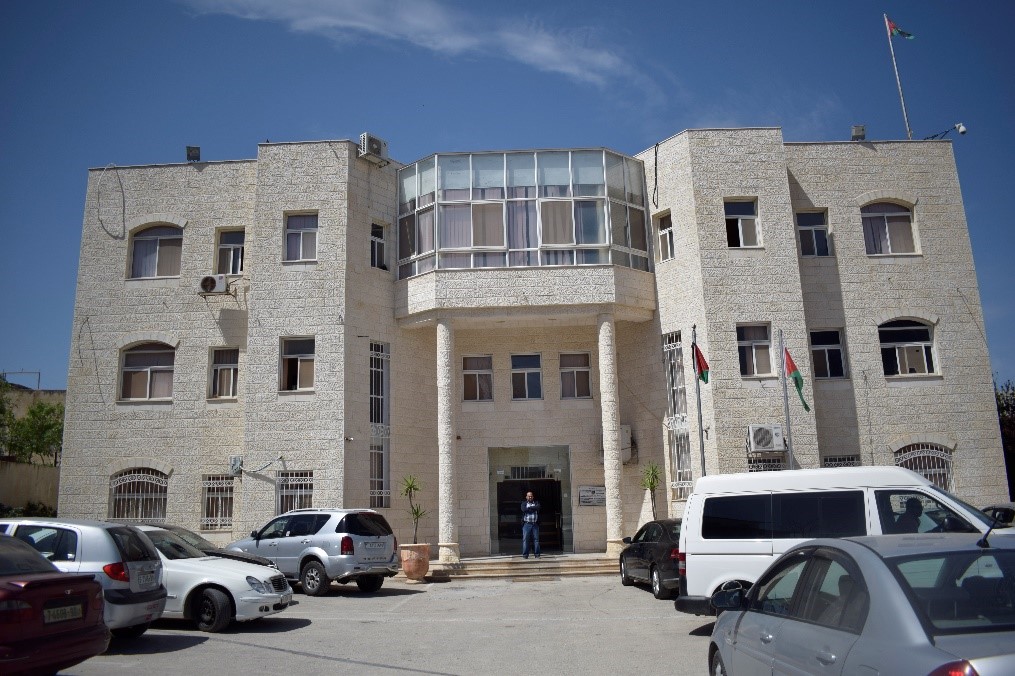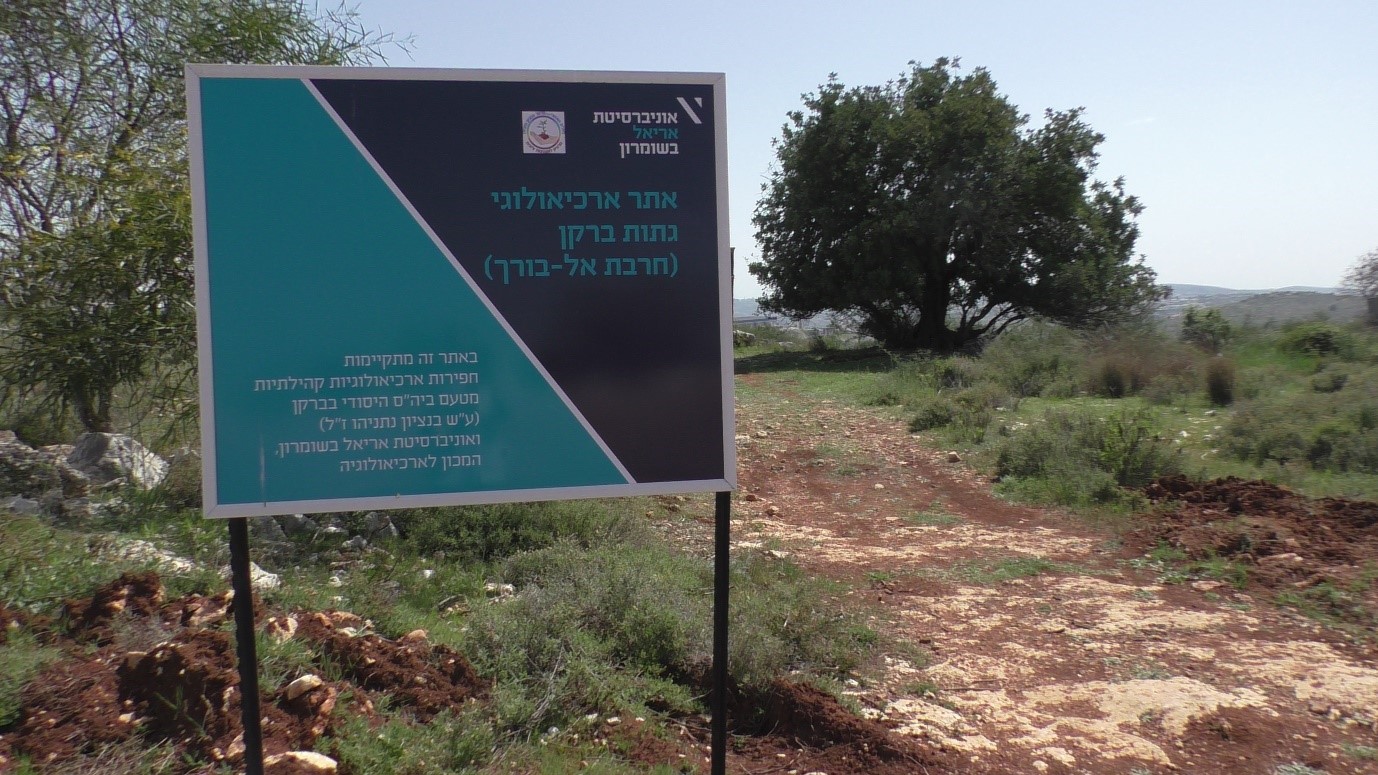Haris, Salfit - Cultural sites taken over by settlers
Antiquities sites, intentionally included in the municipal area of settlements, are vanishing from the Palestinians’ consciousness.
Salfit – A meeting we had arranged with the governor of Salfit District.
Our goal was to obtain information about nature and cultural sites in the Salfit area and about the possibility of developing cooperation between Machsom Watch and Emeq Shaveh, as well as the authorities in the Salfit District, to make these sites accessible to the Palestinian population.
Participants: A., accompanied by the Governor of Salfit, A., the District Engineer, about five persons from the municipality, Issa Hars, who made the connection with the Governor, Rony Mizrachi, the director of Emeq Shaveh, Irit Segoli, and Nurit Popper.
We arrived at the Governor’s office at noon, as arranged. The building’s façade is imposing. There’s a lot of activity in the parking area before the entrance. The Governor’s office, on the second floor, overlooking a hilly landscape, is large and magnificent. Issa introduced us. The Governor knows about Machsom Watch and spoke generously about our work at the checkpoints over many years. Irit explained why we’d come and he referred us to the engineer for a practical discussion but first noted that his door and those of the municipalities in the Salfit region are open to us.
 |
The engineer, trained as an archaeologist, is responsible for the tourism and antiquities services and the referent for the settlements. There’s a clear connection between the settlements and the antiquities sites. The settlements’ lands were intentionally selected next to antiquities sites, to link them to Jewish history. He knows the extensive destruction the sites have suffered because the settlers have taken them over. He estimates that 99% of the antiquity sites are in Area C.
Fluently and very painfully he began listing some of the sites that have been destroyed or damaged because the settlers took them over and transformed them into Jewish sites.
Three years ago he had been in charge of public relations and used to host ambassadors and respectable public figures at the Deir Sam’an antiquities site. There was free access. The situation is different today. Because Alei Zahav and Leshem have taken over the sites, access to Palestinians is blocked, and visits are possible only with advance coordination and a special permit that isn’t always granted. He fears that in another 20 years, the younger generation would no longer know that Deir Sam’an had once been part of Palestine. The site is known to date from Byzantine times but the settlers claim the antiquities are remains of an ancient Jewish locality, thus legitimizing their expropriation from their Palestinian owners
The removal of antiquities from sites like Kh. Kurqush, near Brukin, pains him, as well as from Deir Qle’a and Deir Sam’an. The Palestinian Ministry of Tourism and police chase antiquities thieves and impose heavy penalties. The Israeli government, on the other hand, backs the antiquities robbers. The matter was brought to an Israeli court, which wasn’t prepared to disclose where the purloined items were stored – it’s truly top-secret information with far-reaching security implications, or why else would it be secret? Now they’re awaiting a response from the Supreme Court.
He oversees springs and nature preserves. There are more than 90 springs in Salfit alone. Some have dried up because of deep wells dug by Mekorot, and water pumping. Water was abundant before the settlements were established. Sawwiyya had several springs. People would bring water in clay jugs. Today the springs are dry or destroyed. Next to Sawwiyya was a natural cave with a narrow entrance leading to a large cavern measuring approximately 100 square meters. Cool water dripped from the ceiling, and the cavern was cool even on hot summer days. The mineral waters were good for your health. The site was demolished when the road was constructed. He says the Jews pay attention to antiquities and natural sites when these serve their purposes. If not, they destroy them without hesitation.
We asked whether there are Palestinian nature preserves. Only in residential areas in Area A, he replies.
In Wadi Qana, a declared nature preserve, no tree planting is permitted, even though there were orchards there before 1967. The claim is that fruit trees damage the natural environment, while settlements are erected in the nature preserves and the construction rubble is dumped indiscriminately nearby. Palestinians, on the other hand, are very conscious of the environment and nature.
M. doesn’t forget to remind us of Ariel’s sewage flowing down to Wadi Matawwi, adjacent to Salfit.
M. divides the antiquities sites into three categories:
1. Beyond the separation barrier – in the seam zone.
2. Inside the settlements. Deir Sam’an falls in this group.
3. Sites were destroyed during the construction of roads and settlements.
He tries to encourage Palestinian tourism and visits by pupils to the antiquities sites. Access must be free, as in the past, before the settlements were established. And there should be restrooms and safe walking trails. Issa is trying to obtain a permit to reach Al Buraq, which belongs to Hars but is now within the Barkan settlement.
Haris. We visited Issa. A video interview about the army’s incursion to Hars and Kifl Hars the night before. Military jeeps and a bulldozer, the soldiers remained there at night making the residents anxious. Sleep was disturbed, and the entire village was tense. Later they learned the army used the built-up area of the village and the surrounding groves as a training site. The army simply uses us as things, like their tents, their jeeps, their weapons. Just things.
Link to the video: https://www.youtube.com/watch?v=utaBtyjnenQ
Al Buraq – The site contains huge vats hewn into the rock, from the Byzantine period. Children from the area used to play there, swimming in the pits that filled with water in the winter. When the Barkan settlement was established in 1981 the fence was erected, and the checkpoint placed at the entrance to the locality, the site was closed to Palestinians – except, of course, for the Palestinian workers employed in the Barkan industrial zone. Recently a sign was erected at the entrance to the antiquities site, noting that it belongs to Ariel University. They’ve apparently “Judaized” the location, and will advertise it as an Israeli tourist site. The hope that it will be open to Palestinians is fading.
Link to video: https://www.youtube.com/watch?v=ZeiT1CdgA_A&feature=youtube
 |
